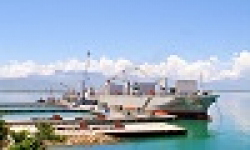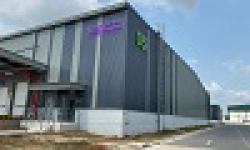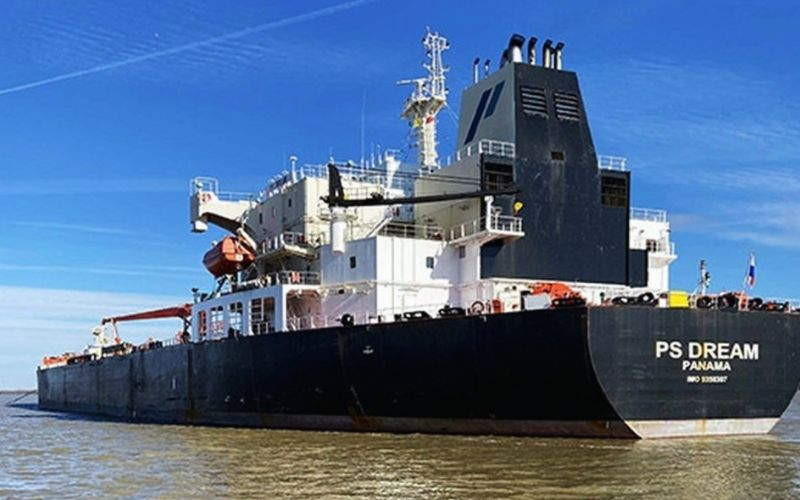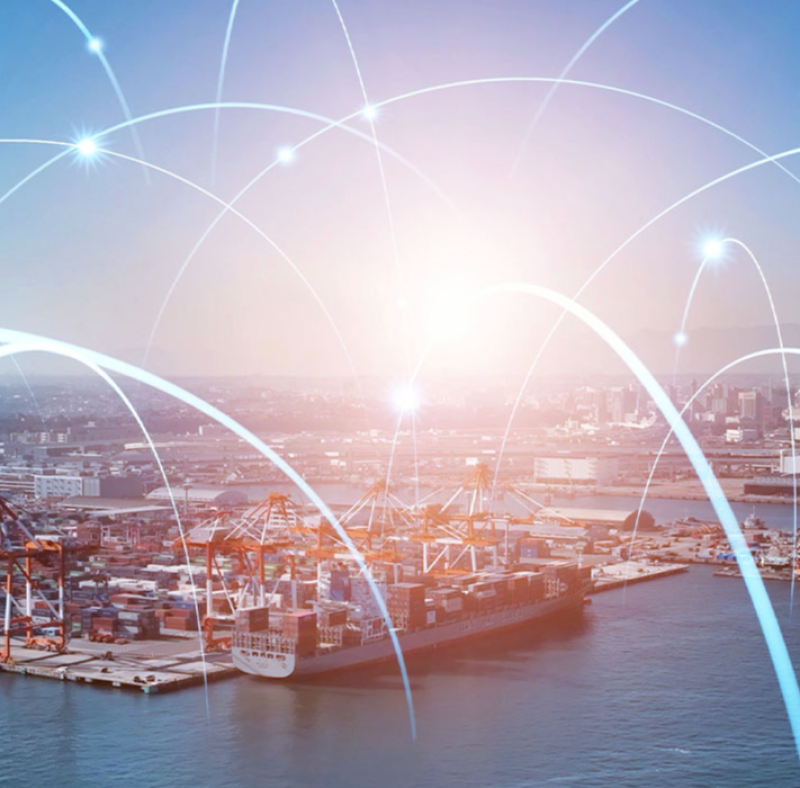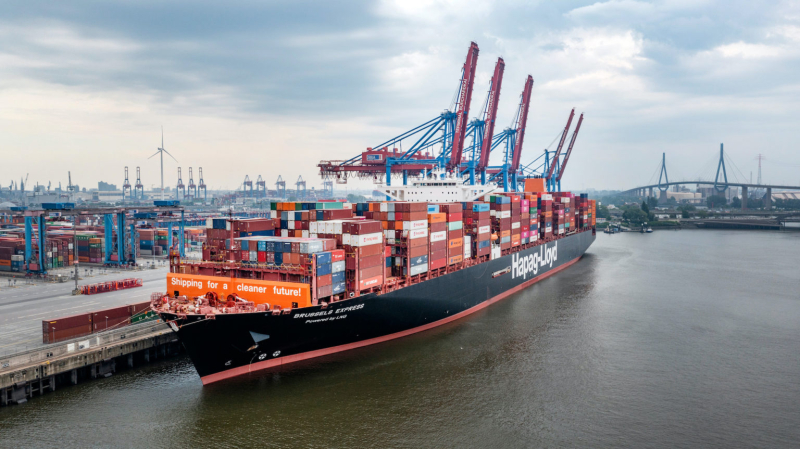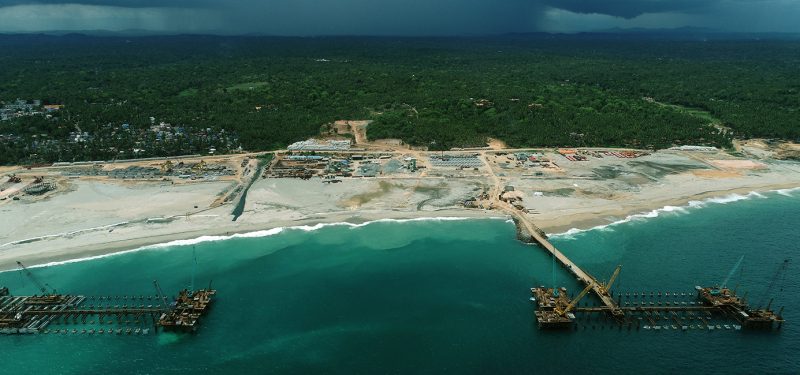The turbocharger is one of the most important parts of the ship’s main propulsion system. Turbocharger surging is a phenomenon that affects the turbocharger’s performance and reduces its efficiency. In this article, we will learn everything about turbocharger surging.
What is Turbocharger Surging?
Turbocharger surging may be defined as a high-pitched vibration of audible level coming from the turbocharger’s blower or compressor end.
It is frequently experienced in low-speed diesel engines, and a sea-going marine engineer must have heard this howling sound generated from the engine at least once in his/her sea career.
Whenever the breakdown of gas flow occurs in the turbocharger, scavenging air reverses through the diffuser and impeller blades into the blower side, causing surging.
In simple words, a large mass of oscillating airflow can cause vibration of the turbo compressor impeller and its vanes, making the compressor unable to operate normally. As a reaction, this produces a high-pitched noise, which is known as compressor surge.

Other terminologies, such as turbo surge or engine surge, may also be used to describe this phenomenon, but the directly involved component surging is the turbocharger’s compressor or the turbo-compressor.
The turbocharger’s turbine or exhaust gas side does not play a direct role in the surging process. However, it may undoubtedly affect the performance of the complete turbocharger, which may lead to turbocharger surging.
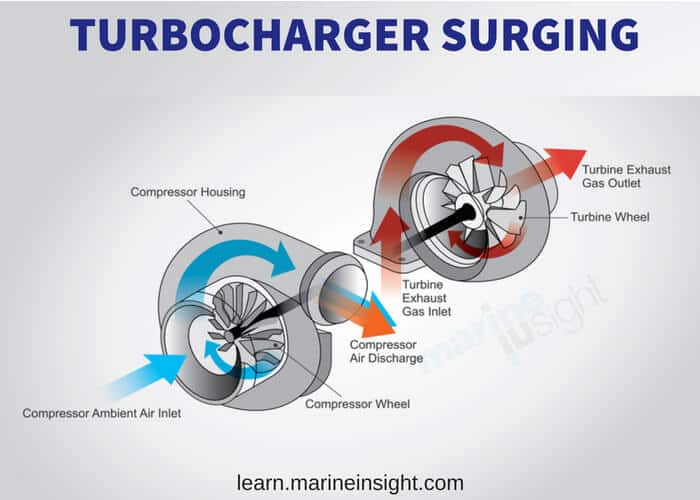
During engine operation at sea, a few surging events may occur as they also depend on external factors such as sea state, weather, abrupt manoeuvring, crash stop, etc. Such cases of compressor surge are acceptable.
However, the engineer on the ship must ensure that the condition of the turbocharger bearing and the lube oil is in good service condition.
If the surging happens during normal engine operation and the frequency of engine surge is high, it may lead to damage to the bearing and, in some cases, mechanical failure of the compressor rotor. Hence, turbocharger surging is a result of various engine parts not performing in sync.
A worn-out engine cylinder or fuel system may lead to problems in the engine and the turbocharger. This will result in less airflow to the compressor against the higher back pressure, making the compressor surge.
Therefore, turbochargers must be properly matched with the engine air consumption rate and pressure across the engine’s operating range and should not exceed the surge limits.
The Surge Line
As shown in the graph, the operating line of the engine should maintain the pressure and volume of the intake air at point A to maintain the equilibrium and efficient working of the turbocharger. Suppose the intake air volume increases; the pressure will decrease on the line of constant speed. To maintain equilibrium, i.e., to be on the operating line, the volume has to decline.

However, if the volume at point B (at the same pressure as A) slightly decreases, the pressure on the constant speed line will decrease. At this stage, the compressor will not be able to maintain the required pressure, and the volume will further decrease, leading to a compressor surge.
Terms Associated with Turbocharger Surge
Surge pressure dip: The surge cycle has a specific pressure dip, and if the cycle continues without changing the operating point, the size of the pressure dip will remain the same.
Surge cycle time: The time the surge starts until the operating point is changed to reach the equilibrium again, i.e. the end of the engine surge.
Surge temperature behaviour: As the surge happens, airflow will reverse, leading to a change in the temperature of the upstream.
Surge shaft speed variations: The shaft of the turbocharger containing the compressor and turbine wheel will also experience a change in speed during the compressor surge
Therefore, the turbochargers should appropriately match the engine air consumption rate and pressure across the engine’s operating range and should not fall into the surge limits.
Category of Turbocharger Surging
Mild surge: The surges happening under mild conditions are not significant. They may arise due to no flow reversal and small oscillations in pressure.
Classic surge: Classic surge happens due to low-frequency oscillations with more significant pressure oscillations.
Deep surge: This is the critical condition when the reversal of the mass flow occurs in the compressor, leading to surging.
What are the Causes of Turbocharger Surging?
The following are the causes of turbocharger surging:
Improper power distribution: Inadequate power distribution between the main engine cylinders may cause the turbocharger to surge as one unit produces more power and the other produces less. Due to this, the air consumption required by both turbochargers differs, which leads to surging.
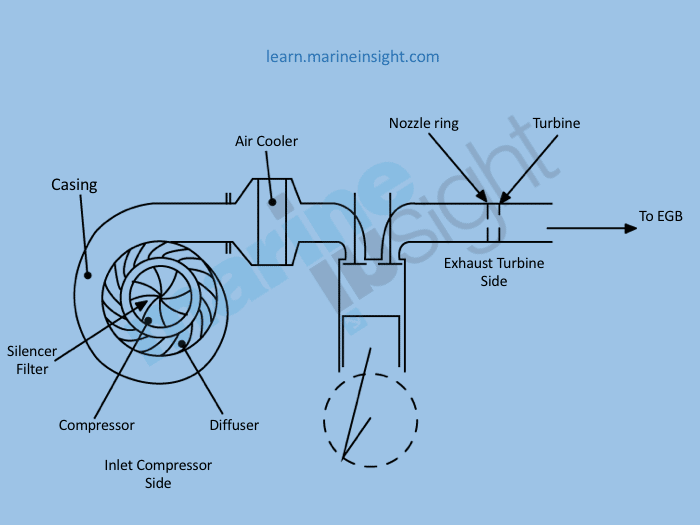
Fouled turbocharger parts:
- If the inlet filter for the compressor on the turbine side is dirty, enough air cannot be supplied for combustion, leading to surging.
- Similarly, if the turbine side is also dirty, i.e., nozzle, blades, etc., enough air cannot be produced for combustion.
- Damaged silencer
- Worn-out turbocharger bearing
Source: marineinsight



